The Psyche: In Conversation with Lauren Thompson
In this interview, artist and photographer Lauren Thompson discusses her avant-garde approach and inspirations using psychology in her captivating imagery to explore the depths of the human psyche and the complexities of identity.
Throughout centuries, self-portraiture has been a timeless form of artistic expression, allowing individuals to explore the workings of their psyche through art and reveal their innermost thoughts, fears, hopes and even their sense of identity. Artist and photographer Lauren Thompson is no stranger to that art form. Thompson’s artistic journey began with a GCSE art project and while reflecting on her artistic beginnings, talks about her experimentation with various creative outlets, eventually finding solace and freedom in self-portraiture. “I really enjoyed doing it and losing myself in the character and I like the control of self-portrait photography,” she says. “It allowed me to explore without inhibitions, just me and the camera.” Her signature style of self-portraiture is perceived through an avant-garde and expressionist lens, saturated in brilliant reds, and high-contrast black and white tones amplified by distorted imagery achieved solely through in-camera slow shutter speed effects. Each piece showcases Thompson’s ability to convey a wide range of emotions, from raw vulnerability to depictions of hauntingly alluring and otherworldly figures within vividly eerie atmospheres that invite our attention.
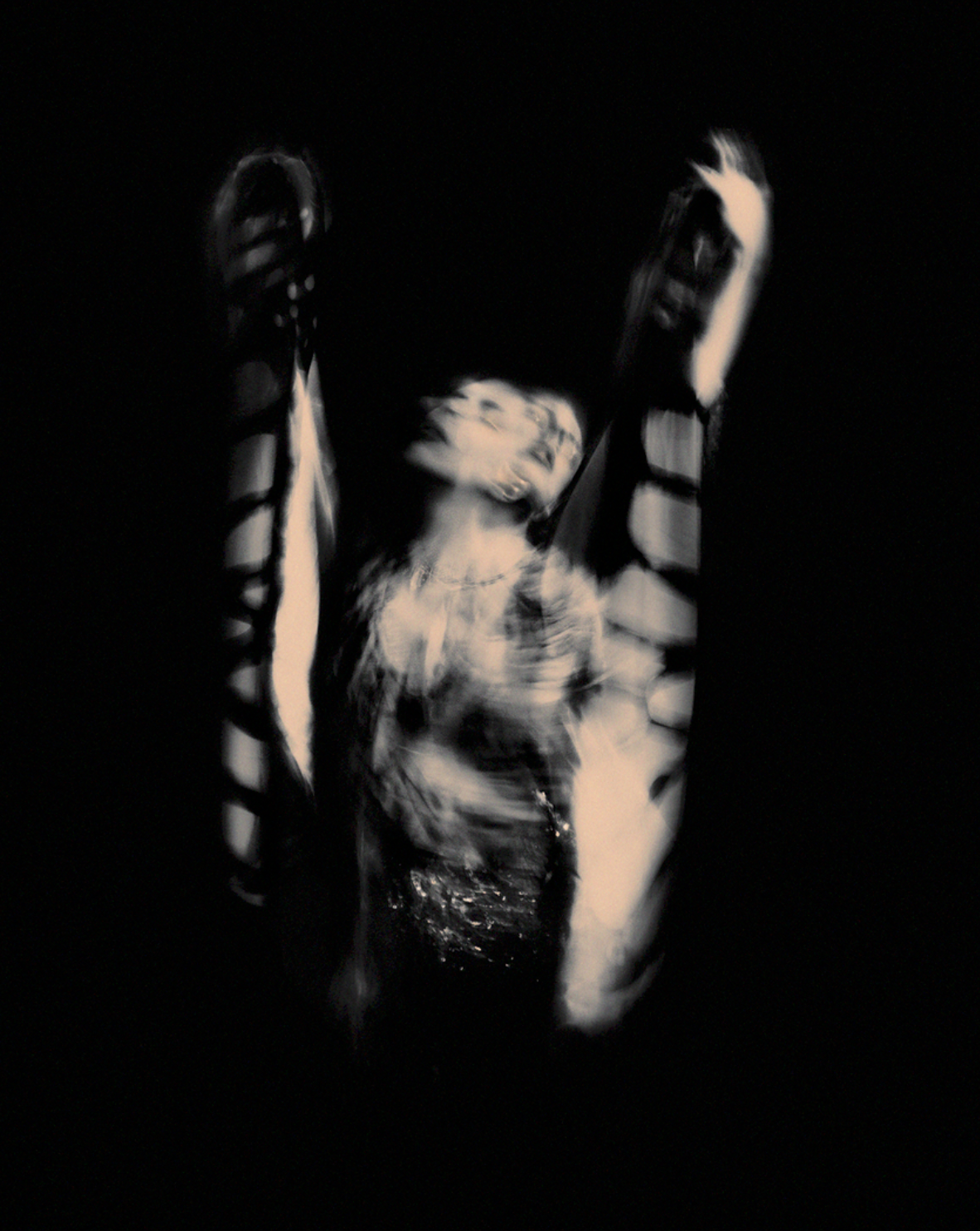
I think everyone has so many facets, and so many other little beings inside of them and, certain ones that they shut down and keep in a kind of shadowy corner.
Q. How do you think your background in psychology has influenced your photography and the themes in your work?
My mum being a psychotherapist has been a massive influence. I’ve always had chats with her and had an appreciation and a fascination for psychology. It is a huge element of my work and it’s something I want to deepen over time. It’s all about exploring the mind and the psyche.
Q. Could you explain the underlying philosophy of your art?
It’s tricky but I always try as much as possible to be a bit abstract with this so that people can, see what they want to see in it, but in general, one of the themes keeps coming back is the invisible. Things that we can’t see, the intangible, sensation over physical fact. I think that’s why a lot of the obscuring of my image comes in because I don’t really want to be too recognizable in the work, I want it to be more an energy and a feeling. I would say the word multifaceted – you dig into lots of other little parts of yourself and I think everyone has so many facets, and so many other little beings inside of them and, certain ones that they shut down and keep in a kind of shadowy corner and then other parts that, can give them strength and that they aren’t necessarily in touch with. But I think it’s important to be in touch with these different facets of the self and if you’re in touch with them, you are less lonely, in a way. Also – catharsis – is just a kind of unleashing of the kind of the mundanity of every day and the things that we fall into a routine and life can be a little bit monotonous sometimes and I think through art we can really unleash it all and just have fun in that way as well.
Q. That’s interesting because, in the past, you’ve mentioned artists like Cindy Sherman, Edward Munch, and Francis Bacon. How have these artists inspired your work?
For me, it has been painters, more than anything, although I’m more inspired when I think about Cindy Sherman and their creative journey. I respond to the expressionists specifically – and you feel like you found a kindred spirit, and it’s very personal work. It comes from, inside their view of the world. I was reading Strangeland by Tracy Emin… where she talks about being confronted with The Scream and wanting to jump inside the painting and hug it and hold on to it and I think that something so beautiful about art is that feeling of finding this kind of soul in the art that you resonate with, and it helps people to empathise and I think that’s a special thing. I had a similar thing with Francis Bacon’s Triptychs – The Second Version of three figures at the base of a crucifixion has a blood-red background, it’s one of my favourite paintings.
It’s very abstract… it looked like what a panic attack feels like, and it’s this little spasming amoeba with the screaming mouth and I was refreshed by it. It had a catharsis to it, so it didn’t feel weak, it felt like something that was misunderstood.
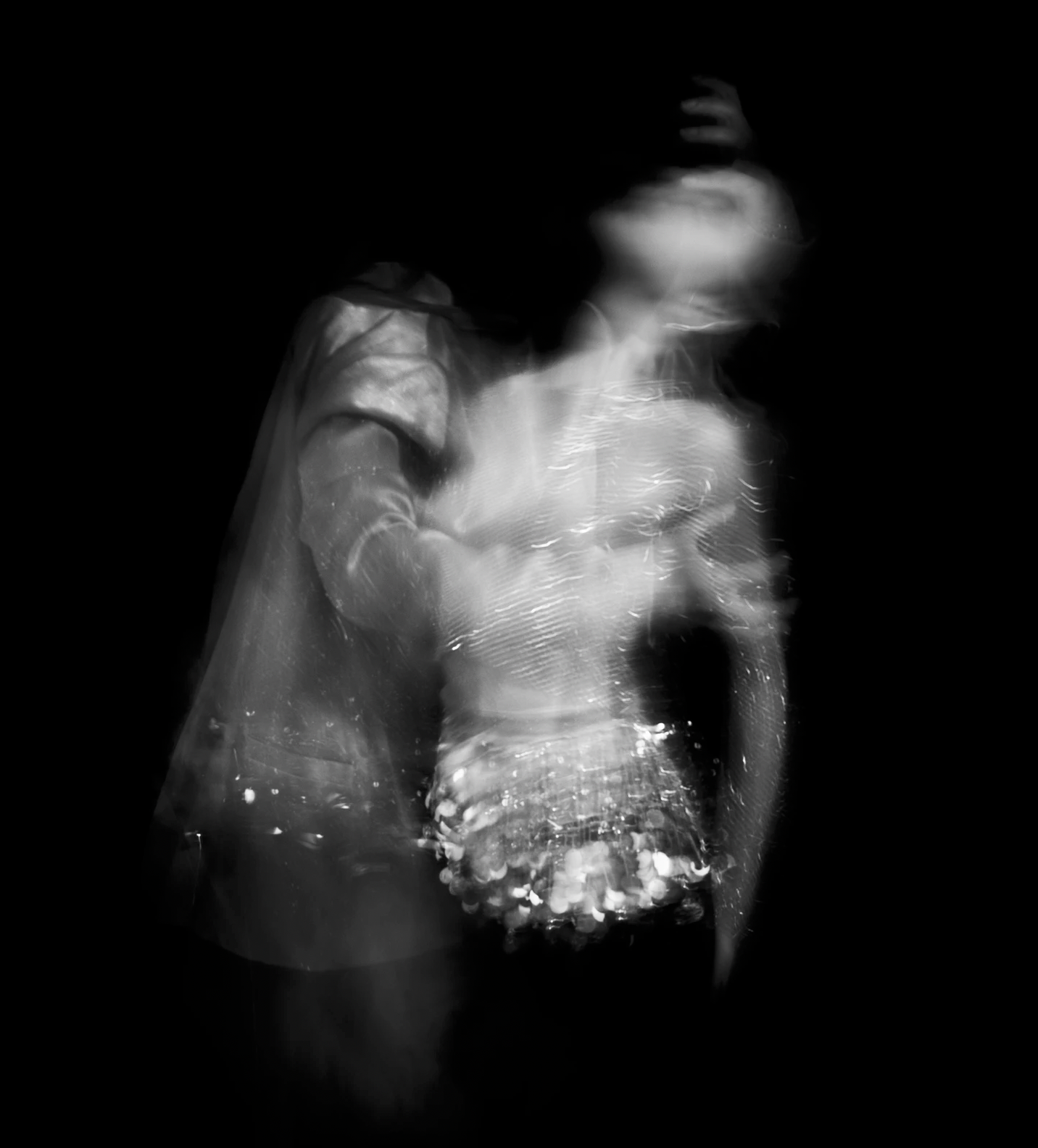
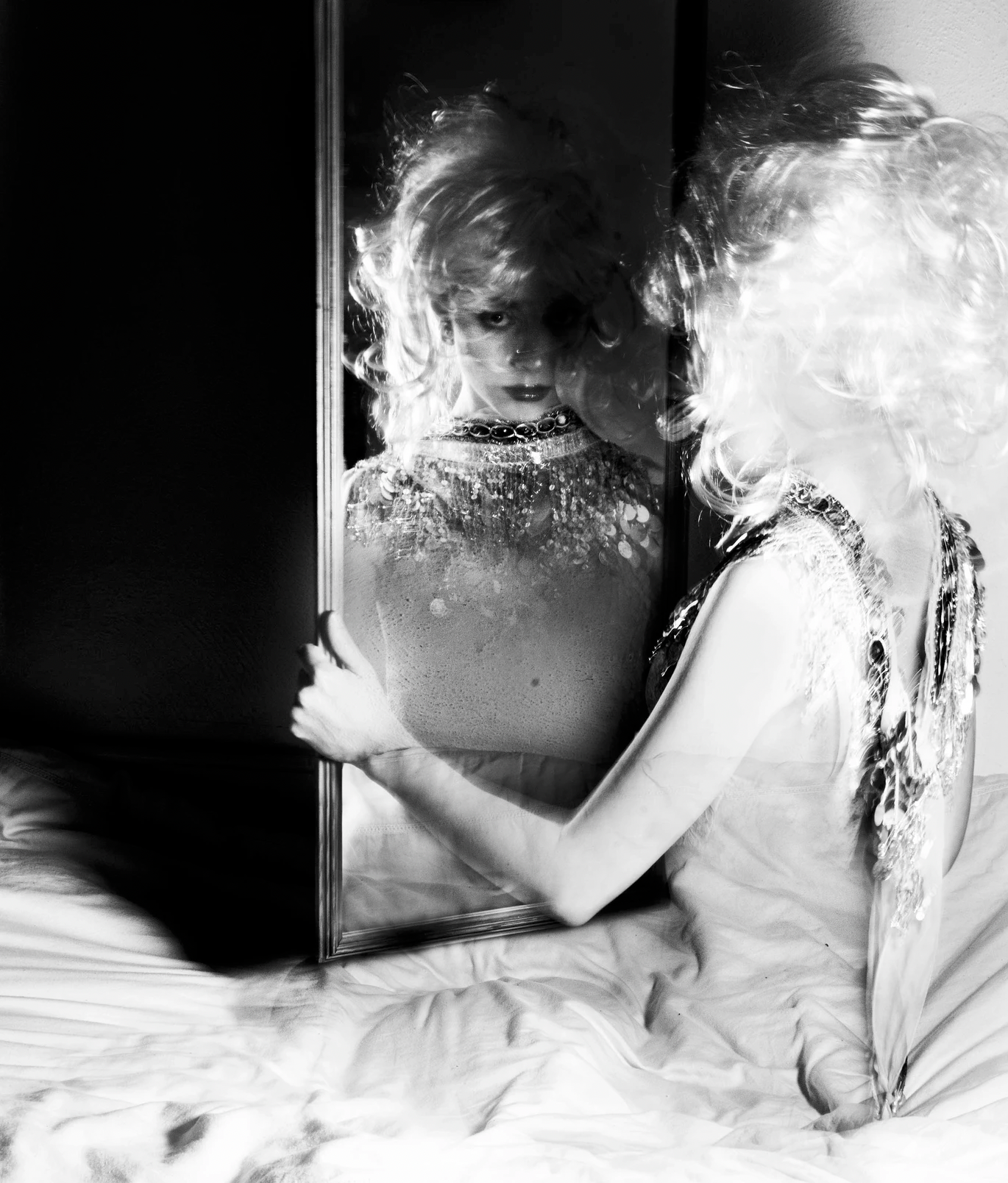
I’m never trying to create something macabre or gothic. My goal is not to shock people or disturb people.
Q. You’ve described your work as you highlight your skin as a painting, how do you channel your emotions and movements into your work, and what impact does it have on the outcome?
Yeah, initially I kind of dither with saying stuff like that because some people are like, “Oh Jesus, you know, here we go, paint with light” – but I feel it’s the only way I can explain what I do. And I’m not saying, “Oh, photography is painting with light,” but I am trying to say that I use the long exposure. I move my skin; it creates this effect – to me, it feels very much like a brushstroke, and I feel similar doing it to how I feel when I paint while listening to music. Painting is quite an exciting romantic notion. I missed that when I transitioned into doing more photography because it felt very still and very matter-of-fact, and in a lot of ways to me when I got back into doing the long exposure it was great because I was surprised by what I was getting. It’s exciting, it’s spontaneous but also… it’s a new medium in a way… that’s why I shoot digital – I use the articulating screen. I turn it around and that’s crucial to me because I could do what I do without seeing myself, but it would be more accidental and more about luck.
Q. What challenges do you face when exploring the complex themes of the human psyche, mental health, and subconscious in your art? And what do you find most rewarding when creating your work?
I think it’s an escape from fear when I’m creating. I’m happy to put it all out there and be vulnerable, as well as exploring different parts of myself that I wouldn’t explore in a conversation. I’ve realized as I’ve started exhibiting my work more, that some people are disturbed by it. I’ve always created with this complete lack of fear of judgment. I don’t know if you’d call it naivety… I don’t worry too much about what people think about it, in that sense if I’m happy with it. I’ve realized that people read into you with your art. And a lot of people are reluctant to comment, sometimes they think, “Is there something dark going on here with this person?” But so much of the time, I’m never trying to create something macabre or gothic. My goal is not to shock people or disturb people. It’s just exploring the complexity, and, in my life, I’ve seen so much beauty and found so much connection with people through them sharing their vulnerabilities as well. It’s also the core of my art – its vulnerability and strength can coexist; it doesn’t have to be one or the other.
Q. You mentioned the colour red. Which is featured in your installation work. Do you think the painting by Bacon is one of your influences?
It’s used in art like Bacon and Rothko’s Red. I find it to be quite passionate and although it’s got certain connotations of- stop and anger and blood and hell. I do think it’s also got the complete opposing side of love and intensity and passion – and blood is a lifeline to keep you alive. I don’t see it as a negative thing.
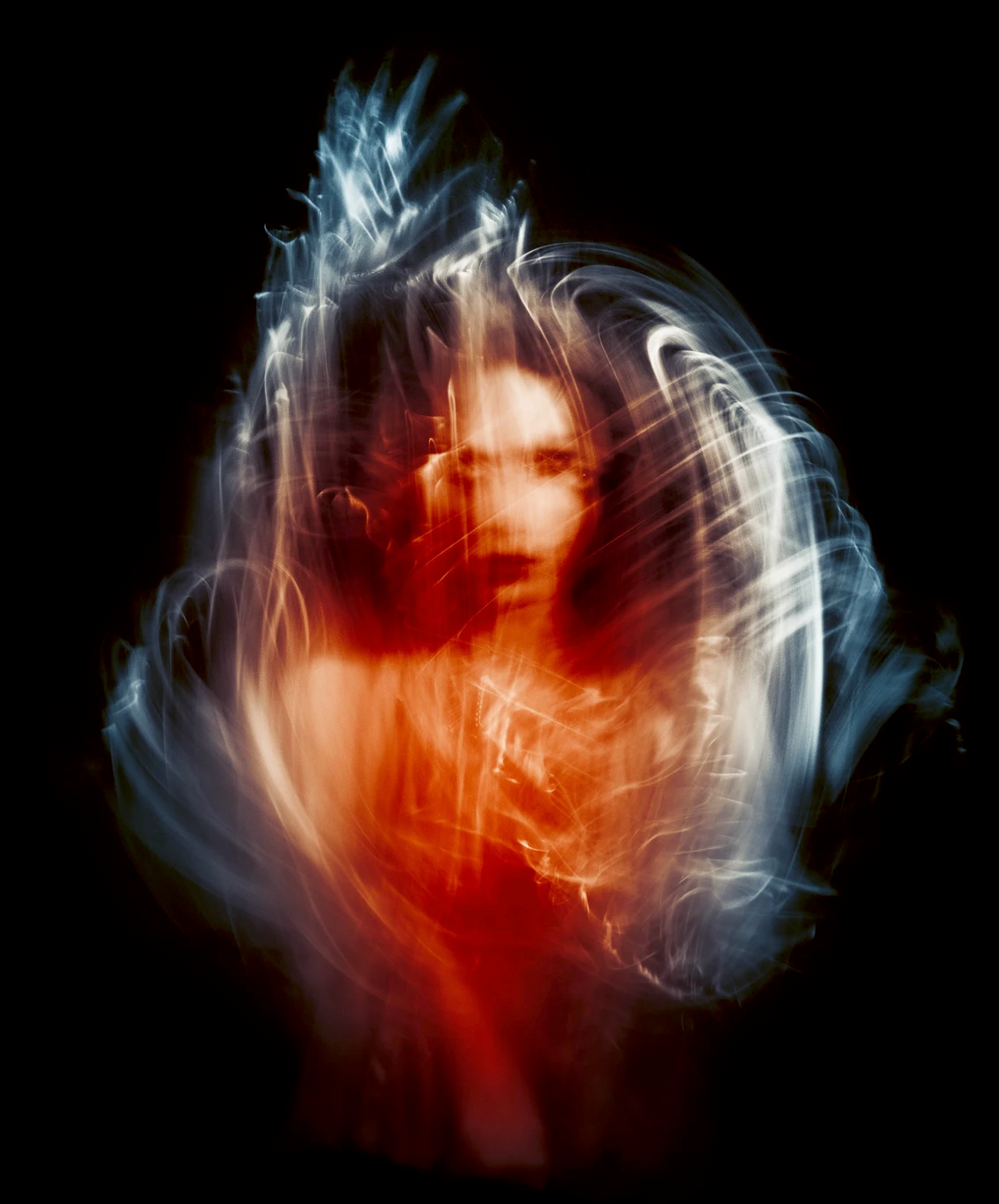
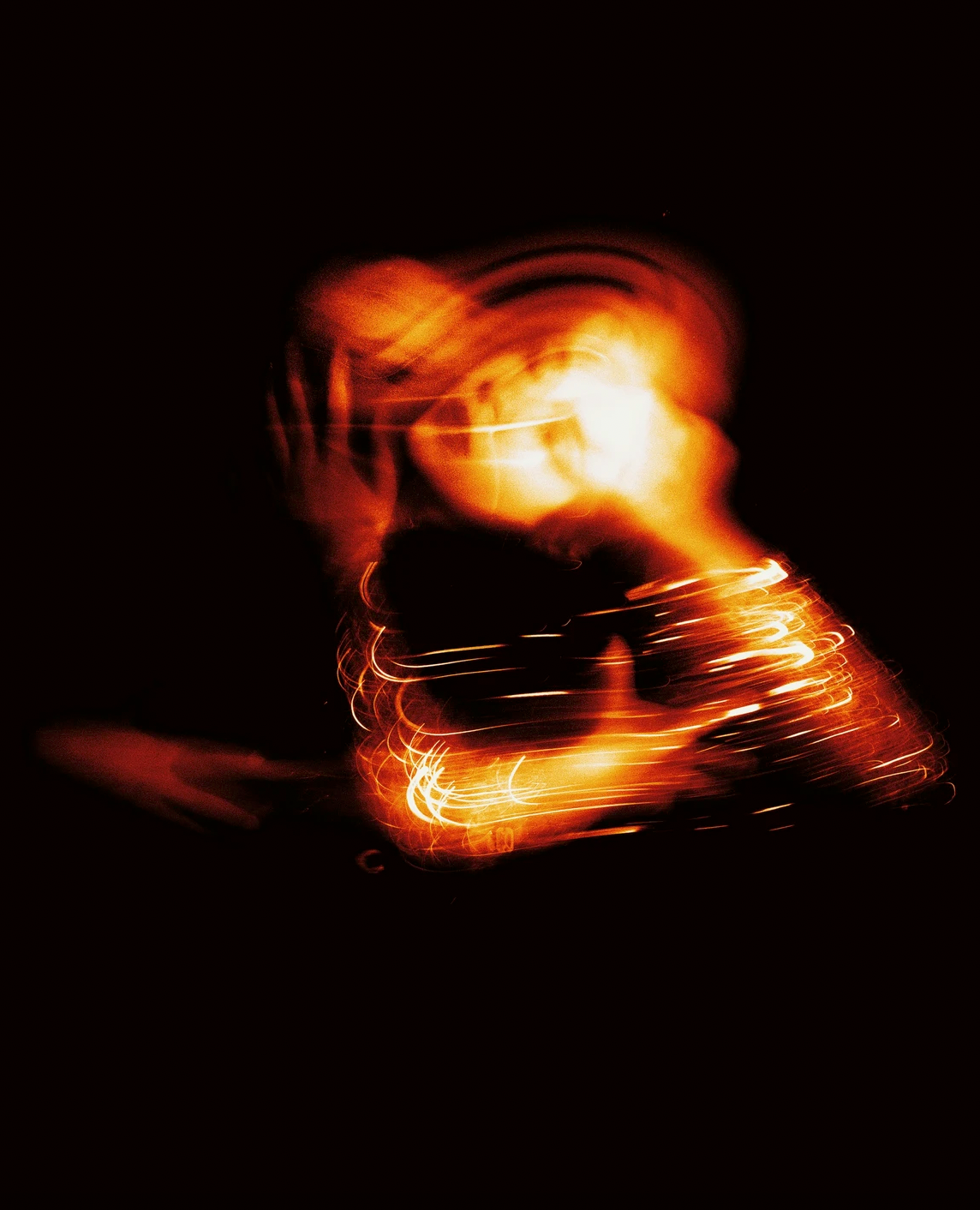
Q. What do you hope the viewers will connect with it?
I’m a big creator of atmospheres and I don’t want the work to fall under just this dark category. But at the same time, I think it’s very much about what one person sees as beautiful and something that gives them lightness, maybe it doesn’t make them feel heavy - someone else may see it and there’s a glint in the character’s eye. It can be interpreted in so many ways and what I love about it is I’ve had such different responses to the same work before… there are layers upon layers, and you look at it from a different angle and suddenly you’re like, “Wait, I don’t think that there is a negative emotion here, I’m seeing confidence in the character or determination or something romantic.” I would hope that people would find some kind of resonance.
Q. How do you see your art evolving in the future? Are there any new themes you’re excited to explore in your upcoming projects?
My work is very much an extension of my experience as it is with a lot of artists. So, it will evolve with me, which is nice because it’ll become enriched by different experiences. I like to live that way though, where art is part of life. I like to mix the two things. I’m pretty spontaneous about creating and there are still certain themes that I’m excited to unravel. I’m thinking of doing a series called- it’s something that I’ll tell myself when I’m in spots of overwhelm- “The show must go on”. I’m looking into visually as well, the circus and the mask, not only as a way of covering but as a way of freeing oneself and liberating oneself. The performance of day-to-day existence, “the whole life is but a stage” thing. I’m also looking at going out and doing some street photography again and trying out a bit of that amidst the self-portraiture as well.
Follow Lauren Thompson on Instagram @laurenthompsonstudio and visit her website.
©2024 Lauren Thompson
To purchase a physical copy of Global Eye Magazine with the article visit magcloud.

Post a comment